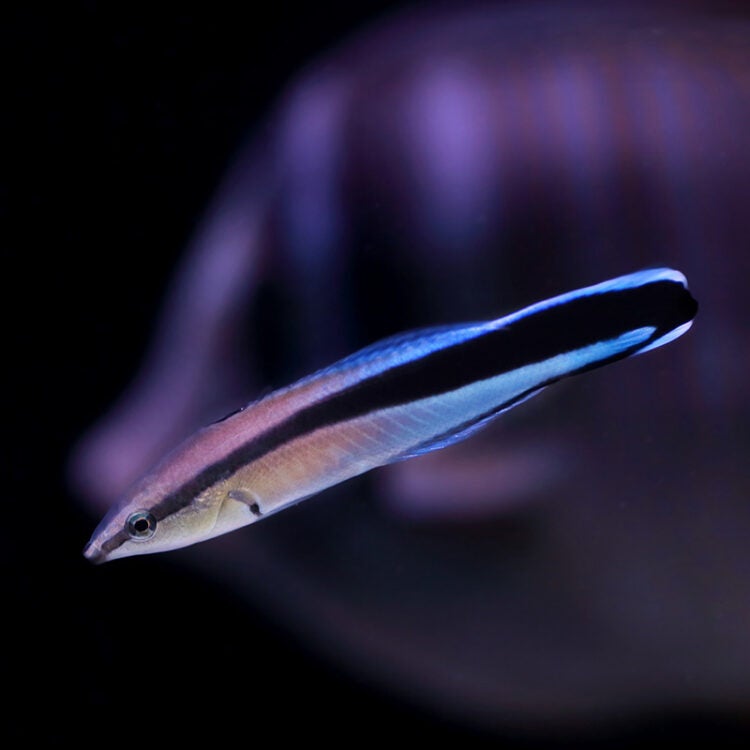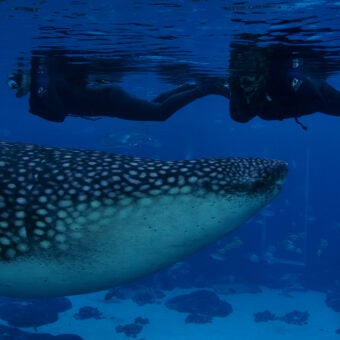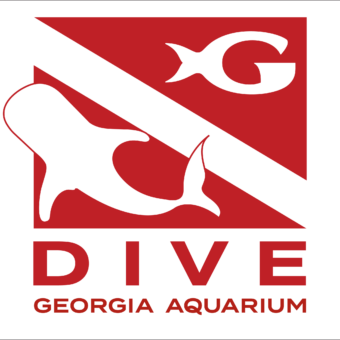-
Size
Up to 5.5 inches (14 cm) -
Diet
Mucus and parasites from other fish -
Range
Indo-Pacific -
Habitat
Coral rich areas, subtidal reef flats and seward reefs
Physical Characteristics
- Maximum length 5.5 inches (14 cm).
- Larger adults have a ventroanterior hook in the caudal fin.
- Juveniles are predominantly black with a single blue stripe running from their snout to the upper caudal fin.
- Adults are blue with a single thick black stripe from the caudal fin through their eyes.
Animal Fun Fact
Bluestreak cleaner wrasse are also known as “blue diesel wrasse” or “bridled beauty.”
Diet / Feeding
- Diet consists of crustaceans, ectoparasites and mucus of fish that gather at cleaning stations.
- Exhibits cleaning behavior exclusively during the day and mostly in the morning.
Range / Habitat
- Occurs in the Indo-Pacific from Southern and Eastern Africa and the Red Sea. Also from southern Japan to the southern Great Barrier Reef and south-western Australia.
- Found in coral-rich areas, subtidal reef flats and seaward reefs to depths of at least 131 feet (40 m).
Reproduction & Growth
- Oviparous, egg-laying species.
- Juvenile mortality in the great barrier reef is 50% in the first year of the life cycle. The average 12-month mortality, however, is 11.1%.
Conservation Status
- “Least Concern” on the IUCN Red List.
Additional Information
- Other common names include “blue diesel wrasse,” “bridled beauty” and “cleaner wrasse.”





